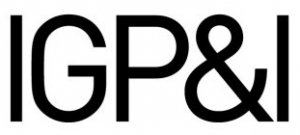Published 06 January 1998
Circular No. 10/97 January 1998
TO THE MEMBERS
Dear Sirs,
REINSURANCE ARRANGEMENTS FOR THE 1998 POLICY YEAR OBO's AND CLEAN TANKERS UNITED STATES OIL POLLUTION COVER EXCESS OIL POLLUTION COVER WAR RISK INSURANCE MOBILE OFFSHORE UNITS CERTIFICATES OF ENTRY
We refer to Circular No. 6/97 relating to premium ratings for the 1998 policy year. At the time of writing the circular it was too early to report on reinsurance arrangements for the 1998 policy year. The purpose of this circular is to update Members with regard to reinsurance arrangements and the placing of additional insurances.
REINSURANCE ARRANGEMENTS FOR THE 1998 POLICY YEAR
Owners' entries
The reinsurance programme for 1998 is now being placed. The Group's General Excess Loss Contract is limited to USD 2 billion, which is the same as for the current year.
The Clubs will assume a vertical share of 10 per cent of the first USD 500 million tranche of the reinsurance for non-pollution claims and 10 per cent of USD 500 million for oil pollution claims. (For the current year the Clubs assume a vertical share of 15 per cent of the first USD 500 million tranche for non-pollution claims and 15 per cent of USD 500 million for pollution claims.)
In addition another vertical share of 15 per cent of the first USD 500 million tranche of the reinsurance for non-pollution claims and 15 per cent of USD 500 million for oil pollution liabilities has been placed through a separate broker. This cover is on the basis of limited reinstatements. Of this 15 per cent vertical share for non-pollution and pollution claims respectively, the Clubs assume the first USD 50 million of each claim.
The reinsurance structure for the 1998 policy year will be as follows:
In the case of the 15 per cent vertical share placed through a separate broker the Pool is extended to USD 45 million (in excess of USD 5 million).
Cover above USD 1.1 billion is on the basis of limited reinstatements.
The limit applies to the aggregate of owners' and demise charterers' liability (see Rule 53.1 and Appendix III of the Rules for Ships).
Charterers' entries - Traditional charterers' cover
The reinsurance structure is identical to that of last year and will be as follows:
The cover, with the exception of cover for oil pollution, afforded to those insured under a charterer's entry and to charterers' co-assured under an owner's entry as described in Rule 78.4 of the Rules for Ships, will be whichever is the lesser of USD 50 million in excess of the owner's relevant limitation figure or USD 300 million each entry any one occurrence or, in the case of cargo claims, any one cargo voyage.
With regard to oil pollution cover for any vessel, the limit is whichever is the lesser of USD 100 million or USD 50 million in excess of the owner's relevant limitation figure each entry any one occurrence subject to an aggregate limit of USD 300 million any one occurrence any one vessel in the event the vessel being covered by more than one charterer in one or more associations participating in the reinsurance arrangements of the International Group of P&I Clubs. If there are more than three charterers in a chain with aggregate liabilities in excess of USD 300 million an average formula will be used to apply the limit of USD 300 million any one occurrence each vessel.
Charterers' entries - Comprehensive charterers' liability cover
For the 1998 policy year the upper limit of the comprehensive charterers' liability insurance will be USD 300 million per event.
OBO's AND CLEAN TANKERS
In the current year, in the case of OBO's or clean tankers, the terms of entry for owners must either contain a warranty that the ship is trading dry (in the case of an OBO) or with clean products (in the case of a tanker) or in the absence of such a warranty the ship will attract the full annual dirty tanker reinsurance cost. If an OBO or a tanker trades with dirty products at any time during a policy year, the full annual dirty tanker reinsurance cost is payable.
For the 1998 policy year, it has been decided to assess such ships on a quarterly rather than annual basis. This means that the full dirty tanker reinsurance costs will apply in any quarter unless the Member accepts a warranty that, for that quarter, the ship will trade dry in the case of OBO or clean in the case of a tanker. If at any time during any quarter the ship trades with dirty products, then the full dirty tanker reinsurance cost applies for that quarter. The applicable quarters are 20 February to 20 May, 20 May to 20 August, 20 August to 20 November and 20 November to 20 February.
UNITED STATES OIL POLLUTION COVER
Exclusion and reinstatement of cover
The exclusion from cover under Rule 53.2 of oil pollution liabilities arising out of an incident to which the US Oil Pollution Act of 1990 ("OPA 90") is applicable in respect of ships capable of carrying oil in bulk as cargo will continue for the 1998 year.
However, cover can be reinstated if the Member agrees to make declarations in the manner set out in Appendix III paragraph 4 - US Oil Pollution Cover - to the Rules for Ships. The declaration procedure for the 1998 policy year is identical to the procedure which applied for the 1997 policy year.
The Association will assume that those Members who agreed to the declaration procedure for the 1997 policy year also agree to the declaration procedure for the 1998 policy year. Thus the cover will be automatically reinstated unless by 20th February 1998 the Association has been notified to the contrary. Members who did not agree to the declaration procedure for the 1997 policy year but who wish to reinstate the cover for the 1998 policy year must agree to the declaration procedure prior to 20th February 1998.
Voyage cap and surcharge
The voyage surcharge system for tankers is designed to cover the costs to both the General Excess Loss Reinsurers and the Pool in relation to the clean up of spills in US waters. For 1998, the International Group has decided that the surcharge per gross ton per voyage will be US cents 14 for Marpol tankers and US cents 16 for those that are not (1997: US cents 16 for Marpol tankers and US cents 18 for those that were not). To qualify for the Marpol tanker category, a tanker must be equipped with segregated ballast tanks in accordance with the requirements of Regulation 13 of Annex 1 to Marpol 73/78. The limit of the number of voyages which will attract the surcharge will be 20 as in the current year.
Owners of ships of 3,000 gt or less, may opt to pay either a fixed rate of USD 9,600 per annum or USD 480 per voyage and USD 8,400 or USD 420 respectively for Marpol tankers. These owners will be charged on a per voyage basis unless a request is made to the Association, prior to 20th February 1998, to be charged on a fixed rate basis. No lay-up returns will be allowed.
Parcel tankers
Owners of parcel tankers carrying 5,000 tons or less of persistent oil cargoes will pay the rate applicable to ships of 3,000 gt or less as in the current year. However, where parcel tankers are carrying between 5,001 and 10,000 tons of persistent oil cargoes the owner will pay the rate applicable to ships of 7,500 gt. This means either USD 1,200 per voyage or a fixed rate of USD 24,000 per annum for non-Marpol tankers and USD 1,050 per voyage or a fixed rate of USD 21,000 per annum for Marpol tankers. As is the case for owners of ships of 3,000 gt or less, owners of parcel tankers on voyages carrying 10,000 tons or less of persistent oil cargoes can opt to be charged on a per voyage or fixed rate basis. No lay up returns will be allowed.
Owners of parcel tankers carrying more than 10,000 tons of persistent oil cargoes will pay the voyage premium based on the ships' full tonnage.
A parcel tanker is a ship constructed or adapted primarily to carry cargoes of noxious liquid substances in bulk, and capable of carrying at least 10 grades simultaneously, having been issued with an international certificate of fitness for the carriage of dangerous chemicals in bulk. Ships qualifying as parcel tankers will still be required to declare their US voyages and in addition to state the quantity of persistent oil cargoes which has been carried on each voyage.
As was the case for the 1997 policy year, the Association reserves the right to determine whether loading or discharging or transferring cargo at several ports or places constitutes a single voyage or more than one voyage. For the purpose of payment of premium a Member will be charged half the rate specified above if loading or discharging takes place solely at Louisiana Offshore Oil Port (LOOP) or solely at a place, other than a port, approved by the US Coast Guard within the US exclusive economic zone.
EXCESS OIL POLLUTION COVERS
These covers are not afforded by the Association but placed directly with market underwriters. Oil pollution cover of USD 200 million in excess of USD 500 million will be available for 1998. In addition a separate market oil pollution cover of USD 50 million in excess of USD 700 million will be made available in order to meet the California COFR requirements. Members who require further details should contact their brokers or the Association.
WAR RISKS INSURANCE
As in previous years, the Association has arranged cover to provide an additional layer of insurance for P&I War Risks which are excluded from cover solely by virtue of the provisions of Rule 58 of the Rules for Ships. The limit of the cover is USD 100 million per vessel per event with a deductible of USD 50,000 per event.
The cover excludes any P&I liability or loss which is recoverable under the Marine War Risks form or which is covered under any other insurance the Member may have.
Further details concerning the conditions under which this cover is granted are to be found in Appendix I, paragraph 5 of the Rules for ships.
MOBILE OFFSHORE UNITS
This cover is placed jointly with Assuranceforeningen Skuld. The maximum standard limit available will be USD 500 million any one event.
CERTIFICATES OF ENTRY
The following provision is incorporated into all Certificates of Entry:
"This Certificate of Entry is evidence only of the contract of indemnity insurance between the above named Member(s) and the Association and shall not be construed as evidence of any undertaking, financial or otherwise, on the part of the Association to any other party.
In the event that a Member tenders this Certificate as evidence of insurance under any applicable law relating to financial responsibility, or otherwise shows or offers it to any other party as evidence of insurance, such use of this Certificate by the Member is not to be taken as any indication that the Association thereby consents to act as guarantor or to be sued directly in any jurisdiction whatsoever. The Association does not so consent."
Yours faithfully, ASSURANCEFORENINGEN GARD -gjensidig-
John G Bernander Managing Director


